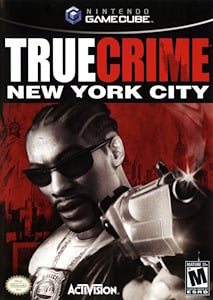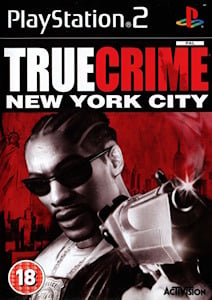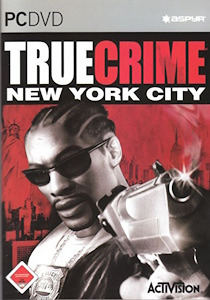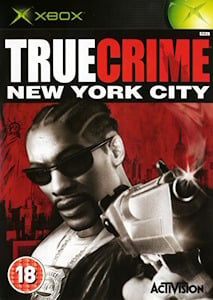True Crime: New York City (2005-)
True Crime: New York City was developed by Luxoflux and published by Activision, releasing in November 2005 for PlayStation 2, Xbox, GameCube, and Microsoft Windows. The game was also made available for Mac OS X shortly after its initial launch. As the sequel to True Crime: Streets of LA, it sought to expand on the open-world, action-adventure formula established in the first game, taking players to a new and larger urban setting. While the original game was praised for its Los Angeles recreation, the New York City installment aimed to capture the distinctive character and landmarks of one of the world's most iconic cities.
In True Crime: New York City, players assume the role of Marcus Reed, an ex-con turned undercover cop in the NYPD. The game offers a sprawling, detailed representation of Manhattan, Brooklyn, Queens, and other boroughs, allowing for both foot and vehicular exploration. The narrative follows Marcus as he works to dismantle a criminal organization while navigating the complex moral choices of law enforcement. Players can approach missions as either a “good cop” or a “bad cop,” influencing the storyline, character interactions, and available options throughout the game.
Gameplay in True Crime: New York City blends driving, shooting, hand-to-hand combat, and investigative tasks. Compared to its predecessor, the game introduces new mechanics, including a more refined cover system, advanced melee combat, and a more robust parkour-style navigation across rooftops and urban obstacles. Vehicle chases are emphasized, reflecting the challenges of policing a busy metropolis. Side missions, collectibles, and mini-games provide additional depth, encouraging exploration and replayability.
As the direct sequel to True Crime: Streets of LA, the game builds upon the narrative and gameplay foundations of the first title. While Streets of LA focused on Los Angeles and Nick Kang, New York City introduces Marcus Reed and a more densely populated urban environment. The sequel retained the moral choice system and open-world freedom, but aimed to expand the scale and variety of gameplay experiences, from small street-level encounters to large-scale gang operations.
Promotion for the game included trailers highlighting the sprawling city, high-octane chases, and cinematic cutscenes. Activision leveraged its marketing channels, including gaming magazines, online previews, and retail promotions, to generate anticipation among fans of the first True Crime title and open-world action-adventure enthusiasts. The game was also featured in various demo showcases prior to release, allowing players to experience the urban environment and core mechanics before launch.
Reception for True Crime: New York City was mixed. Critics generally praised the ambition of recreating New York City in detail and the improvements to combat mechanics, but technical issues, including bugs, frame-rate drops, and inconsistent AI behavior, were widely noted. While some players appreciated the moral choice system and expanded open world, others felt the game failed to capture the same charm and polish as Streets of LA. Despite these criticisms, the game developed a modest following and remains a notable entry in the True Crime series, illustrating the challenges of scaling an open-world action franchise to a more complex urban environment.
Images from MobyGames
Buy True Crime: New York City
Click one of the Ebay or Amazon buttons below to check the latest prices and purchase True Crime: New York City for that particular platform.




Related Searches
True Crime: New York City is available to purchase and download from a range of vendors. Always shop....
True Crime: New York City may be available to download as abandonware from one of the many sites that offer this...
There are various sites out there that can offer cheat codes for games. Search now to find all available...
There are many sites out there that have collated and documented historic reviews of this game. Search now...
We don't host or link to rom sites for this game. However, there are many sites out there that may be...
The initial release date for True Crime: New York City is stated as 16th November 2005. Other ports of the game may....
True Crime: New York City is available to purchase and download from the link(s) shown further up this....
There are multiple sites around the internet that offer visual guides to this game. Search now to find the....








